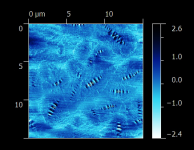Impact of temperature on short- and long-term aging of asphalt binders
DOI:
https://doi.org/10.21809/rilemtechlett.2016.4Keywords:
Bitumen, Aging, Rheology, FTIR, MicrostructureAbstract
Properties of asphalt concrete after aging are important parameters in determining the long-term performance of these materials. With the popularity of reduced temperature mixtures the question remains how this reduced temperature in short-term aging affects the long-term properties. This paper focuses on developing a robust and fundamental understanding of the effect of temperature on aging by connecting the chemistry of bitumen to its mechanics. To this end, round robin experiments are being currently conducted within 8 laboratories using four binders of the same grade 70/100 pen from different crude sources. In developing chemo-mechanical characterization techniques at the nano- and micro-scale, the material’s variability from crude-source to crude-source and its sensitivity to temperature needs to be taken into consideration. Furthermore, the development of uniform specimen preparation procedures for these bituminous materials at the nano- and micro-structural level is the focus. The chemical characterization is performed using Fourier transform infrared spectroscopy (FTIR). For the mechanical characterization rheological data is used using the dynamic shear rheometer (DSR) as well as conventional tests, e.g. needle penetration and softening point using the ring and ball method. It is shown that the short-term aging temperature affects the increase in softening point, while the consequent effect on long term aging is less pronounced.

Downloads
Published
How to Cite
Issue
Section
License
Authors retain copyright of the articles published in RILEM Technical Letters and grant the journal the right of first publication with open access. The work is simultaneously licensed under Creative Commons Attribution 4.0 International License (CC BY 4.0) that allows others to share and adapt the work under the following terms: 1) a proper attribution is given in a form of bibliographic record with the DOI link directing to RILEM Technical Letters; 2) a link to the license is provided; 3) the changes (if any) are indicated.









